Carl Zeiss 8x60 (für das Flak-Beobachtungsgerät 2)Dieses 8x60 Monokular (vgl. Bauform CZ 8x60H) wurde vermutlich als Ziel- und Richtfernrohr an einem so genannten Flak-Beobachtungsgerät 2 (s. Datenblatt) genutzt. Zur Montage an das Stativ hat das Monokular zwei Arme mit Ringenden, die im Grunde wie Fernglasbrückengelenke aussehen. Letzteres lässt auch die Vermutung zu, dass es nur die linke Hälfte eines Doppelglases ist. Wenn dem so ist, wäre es ein seltenes 8x60 BZA (Brückenzielapparat) zum Torpedozielen, das original in den 1928 gefertigt wurde und in den späten 1930ern nachvergütet wurde (vgl. Seeger, 2015, S. 380).Der obere Gehäusedeckel ist wie folgt beschriftet: Zeiss-Linsenlogo, darüber Nr. 54658, darunter "8x" und Sehfeld "8¾°", zwischen Letzterem ein großes "M" und ein Anker (hier offensichtlich für die Reichsmarine), wiederum zentriert darunter "Nr. 6", dann ein "T" für die T-Belag-Vergütung sowie das Kältefettzeichen "+". Im oberen Deckel ist ein Filterrad eingebaut, das mittels dessen geriffelte Außenseite an der halbseitig offenen Deckelseite gedreht werden kann. Die Filterglasfarben sind 'klar', 'dunkelgrau-grün', 'blau' und 'orange'. Als Strichplatte ist ein Fadenkreuz verbaut. Das Okularstück hat eine Dioptrieneinstellung von +6 bis -5 mit Kennzeichnungen bei Null und Fünf. Am Objektivtubus gibt es eine ausziehbare Sonnenblende. Das Okularstück, der Deckel und der gerade Objektivtubus sind schwarz lackiert, das Gehäuse und die Sonnenblende sind mit Hartgummi ummantelt. |
Carl Zeiss 8x60 (for the "AA Instrument Observation 2")This 8x60 monocular (cf. design of the CZ 8x60H) was probably used as an aiming and directing scope on a so-called Anti-aircraft observation instrument 2 (see data sheet). To be mounted on a tripod, it has two arms with rings at their end - thus looking like the two bridge hinges. The latter lets us also assume that it might only be the left half of a binoculars. If so, it is a rather rare 8x60 BZA (Brückenzielapparat = Bridge Targeting Apparatus) for torpedo targeting which originally was made in the 1928 and was newly coated in the late 1930s (cf. Seeger, 2015, p. 380).The top body cover plate is marked as follows: Zeiss lens logo, above that Nr. 54658, below that "8x" and f.o.v. of "8¾°", between the latter a captial "M" and an anchor sign (here obviously representing the Navy), further below that there is a "Nr. 6" in a centred position, then a "T" for the T-coating as well a the cold resistant marking "+". The cover plate has an incorporated filter wheel. Its outer knurled rim can be accessed at the open half of the upper plate in order to turn the filter wheel. The filter colours are 'clear', 'dark greyish green', 'blue' and 'orange'. The reticle coems with cross-hairs. The eyepiece has a dioptre adjustment ranigng from +6 to -5 being marked at zero and five. There is an extendable sunshade at the objective end. The eyepiece , the cover plate and the straight obejctive tube are lacquered black, the housing and the sunshade are covered with Ebonite. |
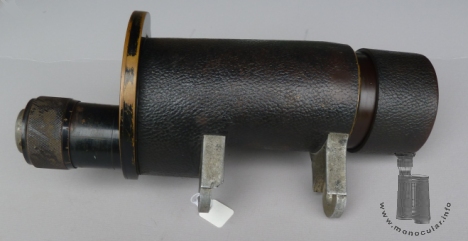
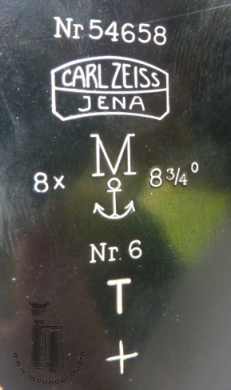
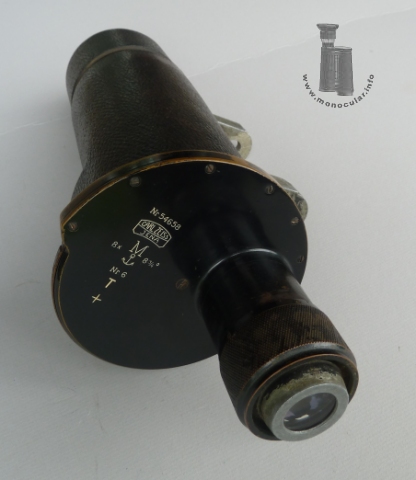
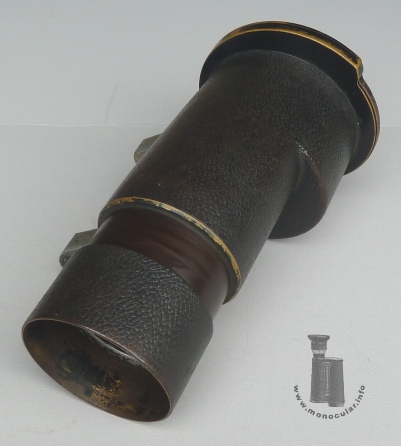

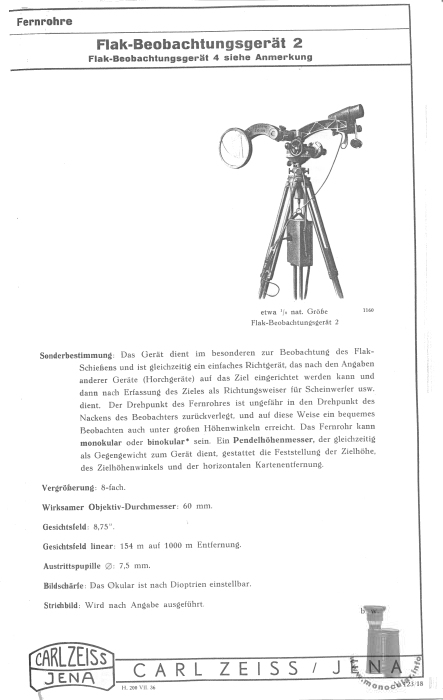
| Das 8x60 wiegt 2508 g. Es ist 27 - 28 cm lang, der Okulartubus ist 47 mm, der Fokussierungring 52 mm und die Okularlinsenfassung 34,4 mm im Durchmesser. eine Augenmuschel ist nicht vorhanden. Der Filterrad-Deckel ist ca. 125 mm, das runde 70 mm lange Prismengehäuse ist 103 mm im Durchmesser. Der leicht konische 85 mm lange Tubus verbreitert sich von 77 auf 81 mm im Durchmesser, der gerade Objektivtubus ist 73 mm und die darüber liegende Sonennblende 79,3 mm im Durchmesser. Die Sonnenblende lässt sich bis zu 28 mm ausziehen. Die Objektivlinse ist um 23 mm in die Fassung zurück versetzt. | The 8x60 weighs 2508 g. IT is 27 - 28 cm long, the eyepiece is 47 mm, the focusing ring 52 mm, and the ocular lens frame 34.4 mm in diameter. The eyecup is missing. The filter wheel plate measures c. 125 mm, the round 70 mm long prism housing is 103 mm in diameter. The slightly conical 85 mm long tube ic nreases from 77 to 81 mm in diameter, the straight obejctive tube is 73 mm and the sunshade around it is 79.3 mm in diameter. The sunshade extend up to 28 mm. The objective lens is retracted by 23 mm. |
Fotos: Zeun

